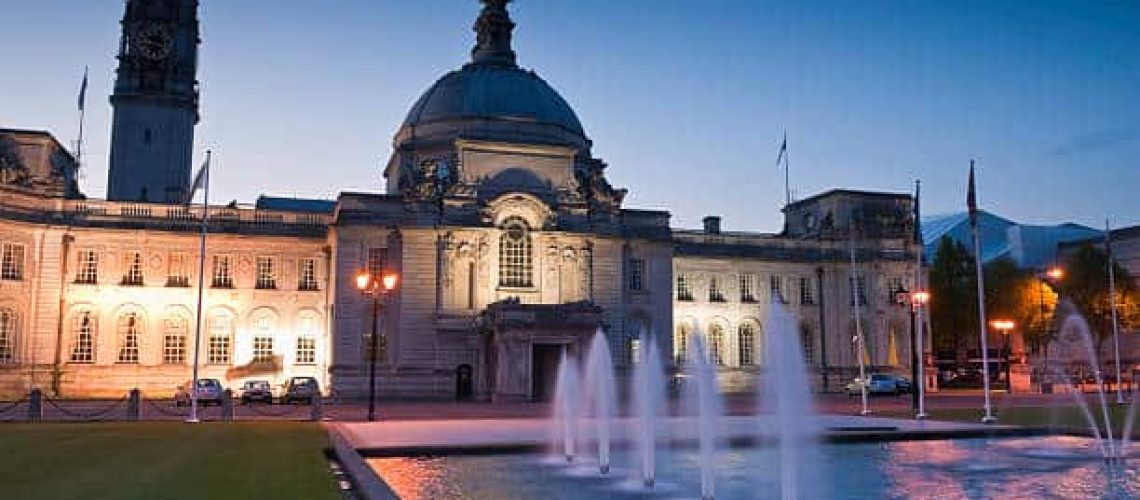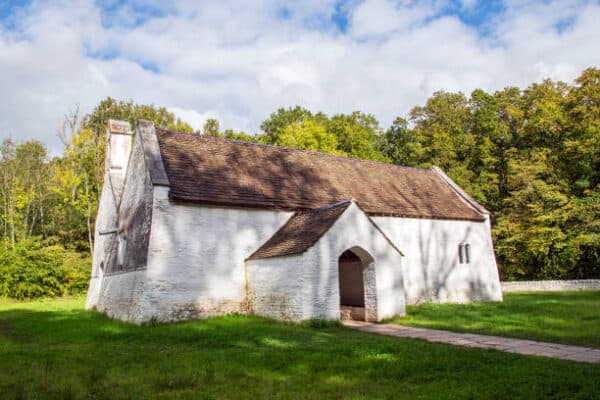
St. Fagans National Museum of History
St. Fagans is one of Europe’s leading open-air museums and Wales’ most popular heritage attraction set over 100 acres. It stands in the grounds of the magnificent St Fagans Castle, a late 16th century manor house donated to the people of Wales by the Earl of Plymouth.
Traditional crafts and activities bring St Fagans alive in workshops where craftspeople still demonstrate their traditional skills. Throughout the year St Fagans comes to life as traditional festivals, music and dance are celebrated on the grounds.
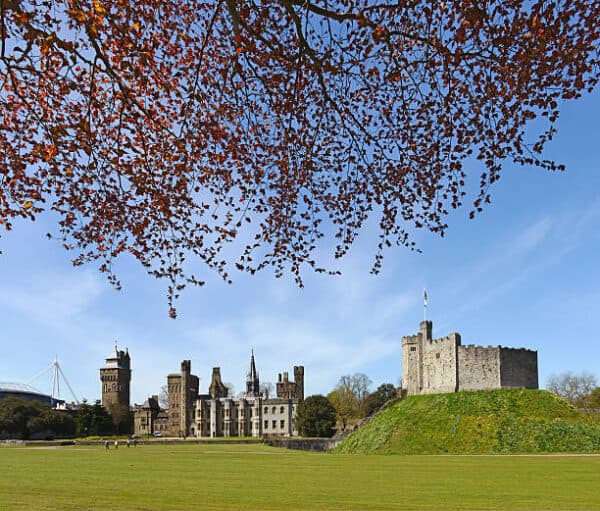
Cardiff Castle
Cardiff Castle is a medieval castle and Victorian Gothic revival mansion located in Cardiff city centre. The original motte and bailey castle was built in the late 11th century by Norman invaders on top of a 3rd-century Roman fort.
Cardiff castle was commissioned by William the Conqueror and formed the heart of the medieval town of Cardiff. In the 12th century the castle began to be rebuilt in stone, probably by Robert of Gloucester. Further work was conducted by the 6th Earl of Gloucester in the second half of the 13th century. Cardiff Castle was repeatedly involved in the conflicts between the Anglo-Normans and the Welsh, being attacked several times in the 12th century, and stormed in 1404 during the revolt of Owain Glyndŵr. Cardiff castle on Castle Street and Mermaid Quay down Cardiff Bay are now hugely popular tourist attractions in the capital of Wales.
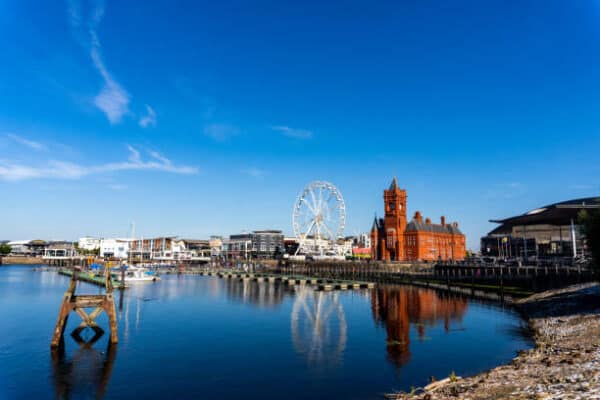
Cardiff Bay
Cardiff Bay is an area and freshwater lake close to Cardiff bay wetlands reserve. The site of a former tidal bay and estuary, it is the river mouth of the River Taff and Ely River. The body of water was converted into a 500-acre lake as part of a UK Government redevelopment project, involving the damming of the rivers by the Cardiff Bay Barrage in 1999. The barrage impounds the rivers from the Severn Estuary, providing flood defence and the creation of a permanent non-tidal high water lake with limited access to the sea, serving as a core feature of the redevelopment of Cardiff Bay in the 1990s.
The Cardiff Bay Trail leads over Cardiff Bay Barrage which is an easy, breezy stroll around the Bay across the sea barrage to Penarth Marina. There’s a flat tarmac pathway around Cardiff Bay Trail so it’s ideal for pushchairs, skaters or bikes. On the Cardiff Bay Trail just before the Barrage there’s a great kids’ playground featuring pretend shipwrecks buried in sand. The Barrage has several locks, offering lots to keep curious kids happy. Taxi boats, which pass by Cardiff Bay Wetlands Reserve, run at least hourly back to Mermaid Quay, in Cardiff Bay, from just across the locks next to Penarth Marina.
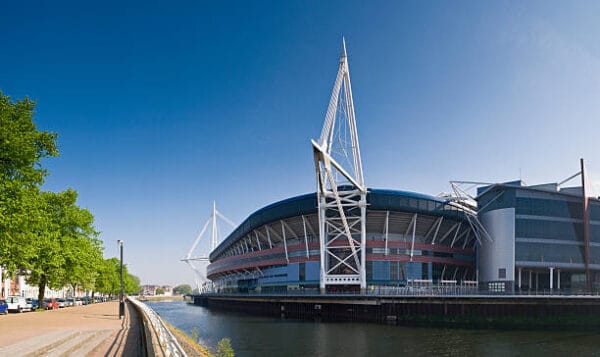
Principality Stadium
The Principality Stadium, formerly known as the Millennium Stadium, is one of the UK’s leading multi purpose events venues, host to the most truly memorable of live performances. Impressively, it’s the largest stadium in Wales, the fourth largest in the UK and the second stadium ever in Europe to have a fully retractable roof. The venue opened in 1999 and has welcomed, on average, 1.3 million visitors per year since then! The iconic home of Welsh rugby, originally named Millennium Stadium, also hosts a variety of sporting events including football and speedway, and has an astounding back catalogue of rock and pop gigs, with the likes of Stereophonics, The Rolling Stones and U2 performing here in the past. You can expect only the biggest names in music to gig here with an absolutely massive 70,000 capacity.
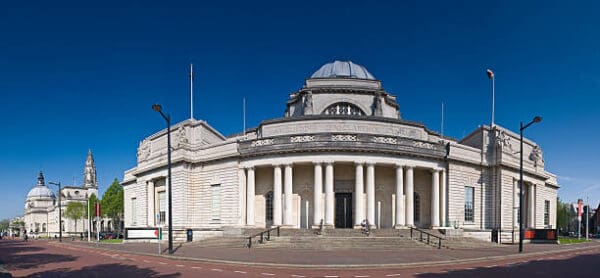
National Museum Cardiff
The national museum, based in Cardiff city centre, has collections from art to science, everyday objects to beautiful artefacts, you’ll find it all in one incredible museum. The whole of the first floor is dedicated to Wales’ national art collections, from paintings and drawings to sculpture and ceramics. It features one of the best collections of Impressionist paintings in Britain and leading international artists of today. Be inspired by our breath-taking art collections featuring work by Turner, Monet, Rodin, Van Gogh and leading Welsh artists such as Richard Wilson, Thomas Jones, Augustus John and Gwen John. Take a journey through space and time in the Evolution of Wales gallery, where you can see real meteorites, moon rock, dinosaurs and woolly mammoths! Our national museum Cardiff natural history galleries house animals, birds and insects from Wales and beyond, including a humpback whale skeleton and the world’s largest leather back turtle.
You can take a walk through Welsh history at the National Museum Cardiff, in the fascinating “Evolution of Wales” gallery as well as exploring the impressive array of Welsh art they have on display. Situated in Cathays Park, the national museum Cardiff is great for children too with many interactive elements to explore.
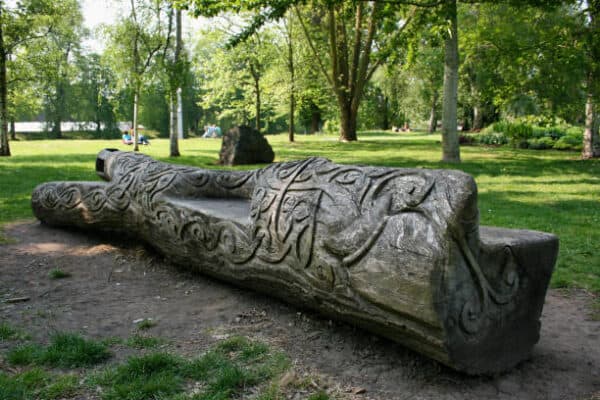
Bute Park
Bute Park is set on 52 acres of landscaped gardens and trees that were once the surrounding grounds of Cardiff Castle. The grounds and Castle Green were landscaped in the 1700s by the renowned gardener Capability Brown. The park itself was fashioned by Andrew Pettigrew, Head Gardener to John Patrick Crichton-Stuart, Third Marquess of Bute.
John Crichton Stuart, Fifth Marquess of Bute, donated the park to the Cardiff Council in 1947. The park lies on the east bank of the River Taff, adjunct to Cardiff Castle. It is made up of flower gardens, an arboretum and recreational areas. Most of the area is grass and woods and lanes lined with trees. There is also a water bus that runs from Bute Park to Cardiff Bay.
Sophia Gardens is on the west bank of the Taff. It is home to Glamorgan County Cricket Ground and the Sport Wales National Centre. Opposite Sophia Gardens on the other side of the river and reached by two footbridges, is Pontcanna Fields, a Grade 2 listed historic park by the Cadw Register of Landscapes.
Starting in 2007 the Council began a restoration project for Bute Park. A Summerhouse Kiosk was built in the style of William Burges’ Summerhouse in 2010. The Animal Wall built by William Burges was cleaned and restored. The West Lodge historic gateway was altered to become the Pettigrew Tea Rooms.
The Education Centre, a newly built facility is located in the Bute Park Nursery. Designed on the idea of a “secret garden”, it is the heart of the public education program in the city centre.
Cardiff City Bus Tour
Enjoy a tour of Cardiff and Cardiff Bay and witness this wonderful city with a fantastic sightseeing experience for two! Take your time and explore Cardiff with an unlimited hop-on hop-off open top bus tour. Valid for 24 hours, this flexible sightseeing experience is the perfect way to take in the sights of Cardiff and Cardiff Bay to discover its top attractions!
Your sightseeing experience begins once you board your bus at one of the 12 conveniently located stops around Cardiff. With live commentary on board from your expert guides, you can be sure you’ll learn the facts and enjoy the sights as you sit back and relax during the tour! You’ll have unlimited hop on, hop off access to a tour route that offers the perfect way to explore Cardiff, taking in Cardiff Castle, the National Museum of Wales, Cardiff Bay, the Dr Who experience, the Millennium Stadium and much more! This sightseeing experience is valid for 24 hours, giving you time to make the most of your day out in Cardiff with this fantastic hop on, hop off sightseeing experience for two.
This Cardiff and Cardiff Bay sightseeing tour offers the perfect way to soak up the sights and travel around during a day trip to the city! The tour makes a perfect experience gift for locals looking to reconnect with the city, or for visitors who want a flexible way to discover all that this wonderful area has to offer.
Doctor Who Cardiff Walking Tour
Cardiff and has been the home of Doctor Who since the show returned in 2005 and, on this fully guided walking tour, you will get to see where over 30 memorable scenes from more than 20 episodes have taken place.
Starting off at Cardiff Castle, your tour will include a 30 minute walk around the Medieval and Victorian areas of the castle including the TARDIS library, scenes from the episode Rebel Flesh plus Torchwood and Sherlock.
This is then followed by a walking tour around Cardiff City centre and includes the scene of Danny Pink’s death from Series 8, a visit to the National Museum of Wales which has hosted many scenes from the show, the site of Donna Noble’s ill-fated wedding, Rose Tyler’s workplace and much more.
Your guide will show you how terrestrial and intergalactic scenes were filmed on location in Cardiff and give you the chance to follow in the footsteps of four of the Doctors and their assistants.
The walk will finish in Cardiff City Centre. Please note that owing to the nature of the locations visited, this tour is not wheelchair or pram friendly.
This walking tour complements the Doctor Who Cardiff Bus Tour (which runs the day before, on Fridays) and visits sites in Cardiff Bay and the suburbs of the Welsh capital.
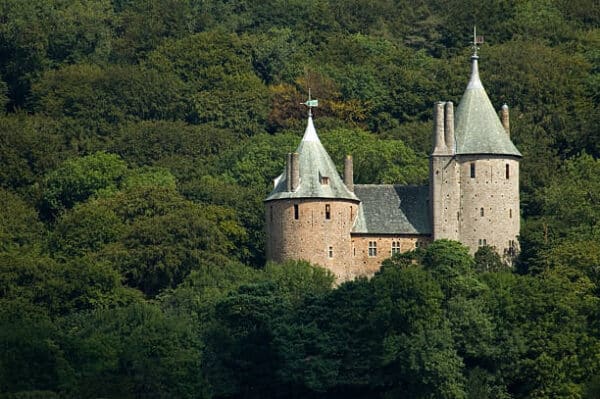
Castell Coch
Castell Coch which means Red Castle, is said to rise up from the surrounding Forest Fawr like a vision from a fairy tale. Located above the village of Tongwynlais in South Wales, it is a 19th century Gothic Revival castle, built by John Crichton- Stuart, the 3rd Marquess of Bute and architect, William Burges.
They used the medieval remains of the original castle, dating back to the 11th Century, as a basis for the design. The castle is now controlled by Welsh heritage agency Cadw. The surrounding Castell Coch beech woods contain rare plant species and are protected as a Site of Special Scientific Interest.
On St Davids Day, you can hear the story of St David and enjoy some live Welsh folk music at the castle. Alongside this, there are a number of kid friendly activities taking placing from the 25th February, including face painting, daffodil making and craft and storytelling.
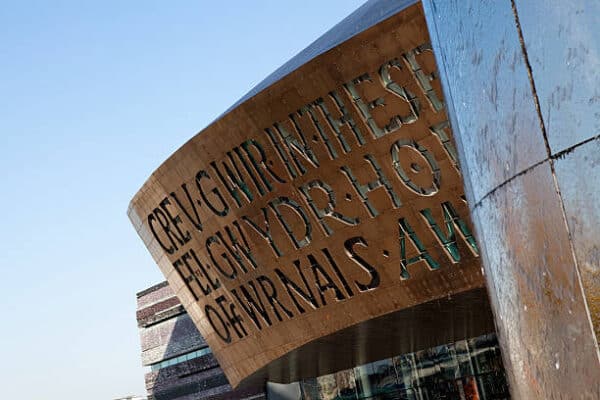
Wales Millennium Centre
Wales Millennium Centre, situated in Cardiff Bay, opened in 2004 and has already established its reputation as one of the world`s iconic arts and cultural destinations. The vision of the Centre is to be an internationally significant cultural landmark and centre for the performing arts, renowned for inspiration, excellence and leadership.
The Centre is one of the most unique and lively performing arts centres in Europe. Look beyond the amazing exterior, as featured in Torchwood and Dr Who, and you will come across a bustling atmosphere that makes our visitors want to return time and time again. It’s so much more than a theatre though.
Cardiff Bay visitors can enjoy blockbuster West End musicals, opera, ballet and contemporary dance, hip hop and stand up comedy, art exhibitions, workshops, training days, free daily foyer performances, guided tours, bars and restaurants….there really is something for everyone. There are also regular behind-the-scenes backstage tours as well as more specialist technical and architectural tours of Cardiff Bay.
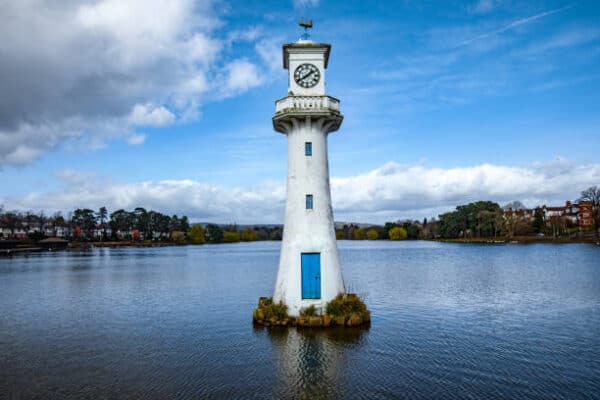
Roath Park
Roath Park stands in a beautiful location at the centre of this busy capital city. The park still retains the classic Victorian Park atmosphere where local inhabitants and visitors alike can enjoy their leisure time in many different pursuits one of the areas popular Cardiff attractions.
Although sections of the land was sold by the Tredegar, Clark, Morgan and Jackson families much of the land was owned and donated by the Marquess of Bute to the then Cardiff Corporation in 1887 in return for the building of roadways around the park. This was a mutually beneficial arrangement as the people of Cardiff acquired their park and the Marquess was able to develop the surrounding land.
The Butes were a well known family who exported coal and owned large areas of land in South Wales. A tradition of land donation was begun which has made an enormous contribution to public ownership of open space and parkland in the city.
Covering in all an area of 52 hectares (130 acres) the lake alone is nearly 12 hectares (30 acres) and was excavated by hand. Land here was originally poor, wet scrubland and was described as a ‘malarial bog’ at the time of purchase. Construction of the park cost a total of £63,000.
Mr W W Pettigrew was appointed Head Gardener of the Public Parks and Open Spaces to work closely with the Borough Engineer to plan the park. Construction of the dam and roads was completed in 1891 together with work on the diversion of the brook and the formation of the Recreation ground by contractors Logan and Hemingway. Cardiff Naturalists Society were involved in the planting of the Botanic Garden which was completed during the winter of 1894/95. Many of the plants and seeds were donated by staff at Kew Gardens with whom Pettigrew had close connections.
On 20 June 1894, the park was opened by the Earl of Dumfries – son of the Marquess of Bute. The date was chosen to celebrate the Earl’s 13th birthday. The opening ceremony was a very grand affair with a civic lunch for 300 followed by a carriage procession from the Town Hall to the Park attended by local dignitaries.
In Roath Park Conservatory see the variety of plants growing there and the wildlife that have made the conservatory their home. Feed the fish and listen to the quacking ducks. Not long after the Park was opened, there are reports of the popualrity of ice skating so much so that occasionally official closing times for the Park were waived and people skating far into the night and early morning was commonplace. Skating became so popular that a plan was proposed to flood part of the Recreation Ground in winter. However, since the Second World War, skating has only been possible on a few occasions.
Techniquest
Set in the heart of Cardiff Bay, there are two floors of mesmerising models, marvellous machines and mind-boggling interactive displays: launch a rocket, try your hand at virtual surgery, experience a real-life earthquake and even feel the force of a hurricane!
There’s something for all ages to discover and enjoy, with over 100 exhibits linked to five key themes: space, the environment, chemistry, biomedical science and world issues.
You can even take your Techniquest experience home with you by using an XTAG while you’re there. You’ll be able to keep a record of all your activities and findings, plus you’ll be able to dig deeper into the science behind the things you’ve seen and discovered, long after your visit is over.
You’ll also find puzzles, books, science kits and much more in Techniquest’s shop – the largest gift shop in the Bay. When it’s time for a break, take a seat in the coffee shop located near the entrance of the building and choose from its wide selection of locally-sourced drinks, sandwiches, snacks and cakes.
Techniquest welcomes visitors throughout the year and is a great Cardiff attractions. For opening times and prices, and to book your tickets, please visit techniquest.org.uk,
Llandaff Cathedral
Llandaff Cathedral stands on one of the oldest Christian sites in Britain. In the sixth century St Dyfrig founded a community close to the ford where the Roman road crossed the river Taff. He was succeeded by St Teilo and then Teilo’s nephew, St Euddogwy. These three Celtic Saints remain patron saints of the present Cathedral and are represented by the three mitres in the Cathedral badge. Nothing remains of the original church but a Celtic Cross that stood nearby can still be seen near the door of the Chapter House.
The present cathedral, which has become one of Cardiff’s more popular tourist attractions, dates from 1107 when Bishop Urban, the first Bishop appointed by the Normans, instigated the building of a much larger church. The arch behind the High Altar was built at that time and the doorway that now leads to the St David (or Welsh Regiment) Chapel may have been the West door of Urban’s church until it was moved to its new site when the Cathedral was extended and widened and a new West front built about 1220. This West front is judged by many to be one of the two or three most notable mediaeval works of art in Wales.
Mermaid Quay
Mermaid Quay is the perfect place for dining out, grabbing a snack or relaxing over a drink while taking in views out over the waters of Cardiff Bay. With cuisine from around the world – from Welsh ice cream to Japanese sushi, from stone-baked pizzas and pastas to the finest French cuisine– Cardiff’s beautiful waterfront is somewhere that caters for all tastes, moods and pockets.
Plus there are great coffee shops, food on-the-go takeaways and much more. Why not have a laugh at The Glee Club, Cardiff’s first and finest comedy venue? There’s gorgeous boutiques – where you’ll find traditional Welshcakes, handmade Welsh gifts, shoes and accessories – and Tesco Express for the essentials.
Plus, there’s the luxurious, internationally renowned Ken Picton Salon for hair and beauty and other services. In a location steeped in history, Mermaid Quay’s distinctive architecture is inspired by its maritime location and rich heritage – featuring decking, towers, balconies, terraces, colonnades and bridges.
There’s always plenty going on, with a great programme of events and entertainment on site plus the location is right in the middle of all the other Cardiff Bay attractions including Techniquest, Roald Dahl Plass, the Wales Millennium Centre and Cardiff Bay Wetlands Reserve.
Cardiff Bay Boat Trip
Travel in comfort on board Princess Katharine, our heated 90 seat waterbus, to and from Cardiff Bay & Bute Park (in the heart of the city centre). This is a hugely popular way of travelling between Cardiff Bay and the beautiful Bute Park in the heart of the city centre. A commentary tells of the history and sights along the way. The boat is warm in winter and cool in summer. Operates all year round – weather permitting – website updated daily.
Hear the history, see the sights as you relax on board with our fascinating commentary, enjoying a different perspective of the capital city. A great way to travel from central Cardiff (Bute Park) to Cardiff Bay.
Princess Katharine is the perfect way to explore the historic docklands area of Cardiff, now Cardiff Bay, with the Senedd, Millennium Centre, Norwegian Church, Cardiff bay barrage and much more and also the city centre, with it’s castle, museums and a vast choice of shops, in a day. Just a 25 minute journey between the two points to relax and “re-charge”. Alternatively, take a cruise from either boarding point, returning there in an hour.
Parc Cefn Onn
Cefn Onn is a small, informal woodland park located on the northern edge of Cardiff, on the north side of the M4 motorway; there is no house attached to the park. It was laid out in the early twentieth century with some fine exotic specimen trees and shrubs, in particular conifers, rhododendrons and azaleas. The park has historical associations with Ernest Albert Prosser (1867-1933) general manager of the Taff Vale Railways, who laid out the Dingle garden from c.1911 and particularly from 1919 onwards with his head gardener Tom Jenkins.
The park is linear in shape occupying the sides and floor of a small north-south valley to the south of the Graig Llanishen scarp. It is bounded on the east by the Taff Vale railway, on the south by the M4, and on the north by farmland. To the west is rolling open ground now in use as a golf course for Llanishen Golf Club. The main feature of the park is the planting of ornamental trees and shrubs, in particular some fine conifers, rhododendrons and azaleas. These have been planted informally, next to paths, in glades, and interspersed throughout the native woodland. Although some of the detail of the park has been lost or changed since it was made it retains much of its original spirit. The layout is one of contrived rustic simplicity, with winding paths interlaced with water channels and a stream, channelled in places into small cascades and rills, opening to ponds and crossed by small rustic stone bridges. E.A Prosser built a summer house in the garden for his son, who was suffering from tuberculosis, with a pool below for bathing. A small pillar at the base of the summerhouse bears the initials of Ernest, Cecil and Donald Prosser and Tom Jenkins.
The park is entered at the south end and is divided into a northern and southern half, with iron railings and a public right of way separating the two sections. The northern half, known as The Dingle, is the original park, laid out by E.A Prosser as the setting for the proposed new house at Cwm Farm. The southern half was originally owned by the Plymouth estates. Both came to Cardiff City Council in 1944, after which date the southern part was planted to match the northern. Much of the original layout and planting of both sections was the work of the head gardener, Tom Jenkins, who was at Cefn Onn for over 30 years. He continued to be responsible for the park after 1944.
Cardiff City Stadium
After spending 99 years at their former Ninian Park ground, the Club in 2009, moved only a quarter of a mile away to the new stadium. Although with far superior facilities than Ninian Park, the design of the stadium itself was rather uninspiring (as admittedly most new stadiums built in this country are). However in 2014, the Club after being awarded the hosting of the UEFA Super Cup Final, set upon increasing the capacity by 5,000 seats chiefly by expanding the Ninian Park Stand on one side. This stand was originally single tiered, but has since had a small second tier and then an overhanging third tier added, making it the tallest and largest stand at the stadium. However, it’s most striking feature is its roof, which is simply huge, elevating and extending quite a distance forward to provide cover to those below. A little reminiscent of the East Stand at Elland Road, the Ninian Stand is far more attractive having more of a distinctive look with clear windshields to either side.
Located opposite is the Grandstand. Named after the corresponding stand at the old Ninian Park, this stand is two tiered, with a small second tier of seating that overlaps the back of the lower tier. In this area at the rear of the lower section there is a row of executive boxes. Whilst at the back of the second tier there is visible a glassed frontage to and area used for corporate entertainment. The team dug outs are located at the front of this stand. Both ends are virtually identical, being single tiered, all seater affairs. The roofs above these stands are situated quite high above the seating areas, with a large back wall, part of which contains Perspex panels to provide more light to the playing surface. The stadium is completely enclosed with all four corners having spectator seating. Above each end there is digital video screen. In view of its multi purpose nature the stadium has in each corner a large access tunnel.
Outside the stadium there are the entrance gates that once welcomed visiting players and officials to Ninian Park. Beside the gates is a plaque in remembrance of Scotland and Celtic Manager Jock Stein who passed away at Ninian Park shortly after a Wales v Scotland World Cup Qualifying game in 1985.
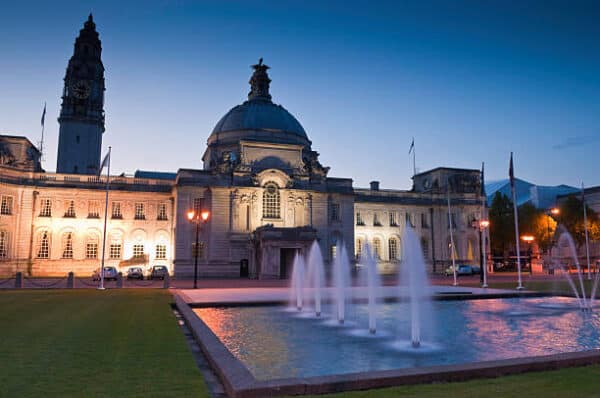
Cardiff City Hall
City Hall stands in the heart of Cardiff. It is the centrepiece of one of the world’s finest civic centres, an area of impressive buildings, landscaped gardens, broad tree-lined avenues and Cathays Park.
Cardiff City Hall was opened in 1906, after Cardiff was given its royal charter as a city in 1905. It is built in English Renaissance style, and the exterior is carved from Portland stone. Cardiff City Hall houses an extensive art collection, including “Winter” by Joseph Farquharson. The collection is displayed for visitors to view, subject to the rooms not being hired for private functions.
The Clock Tower of City Hall is perhaps the most distinctive architectural feature of the building, bold and asymmetrical and a well-loved Cardiff landmark. The magnificent exterior of Cardiff City Hall prepares the visitor for the decorative Edwardian interiors, where rooms both large and small are all elegantly proportioned. The portico leads into the main foyer and reception.
The appropriately named Marble Hall is lined by magnificent columns of Sienna marble mounted in bronze. Beyond the doors at its northern end lies the Assembly Room. This splendid interior has played host to Royalty, Heads of State and diplomats from all over the world on many great occasions.
Directly beneath the dome of City Hall is the Council Chamber, which has witnessed many passionate debates over the years. Today it is available for numerous other uses, including press conferences, televised debates, meetings and wedding ceremonies.
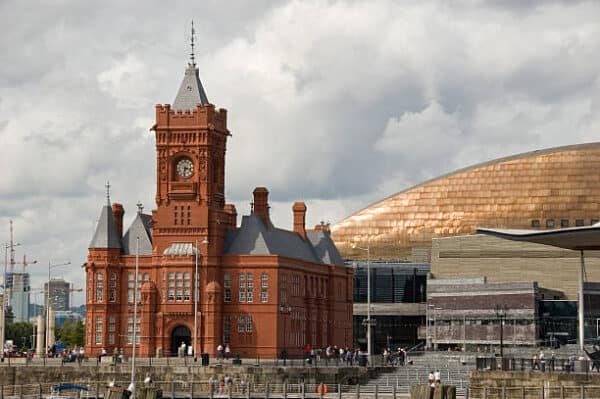
Pierhead Building
The Pierhead helped Wales forge its identity ‘through water and fire’ in the late nineteenth century. Today its aim is to inform, involve and inspire a new generation to forge a Wales for the future. A historic Grade One listed building under Wales’s very own Big Ben, the Pierhead was once the focal point of commerce in Wales. This majestic building has stood proud over 113 years of Cardiff Bay’s unique and varied history.
Visitors can enjoy a visual display that documents the shifting landscape in Cardiff Bay over the past century, through which the Pierhead has remained a constant feature. Explore the Pierhead for yourself, and discover how the building and those who worked there helped shaped Wales’ past.
Norwegian Church Arts Centre
This very special church was founded in 1868 by Herman Lunde of Oslo and is the oldest church in Britain founded by the Norwegian Seamen’s Mission. It was the centre of Scandinavian religion, culture and tradition in the area acted as a Seaman’s mission with Scandinavian newspapers, magazines and facilities for writing letters home. In the 19th century the church welcomed up to 70,000 seafarers annually, with many social evenings being held and a place where sailors could relax and converse with friends in their native tongue.
As the export of coal declined after WWII, the Norwegian ships turned elsewhere for trade. The local congregation continued to use the building until it was closed and deconsecrated in 1974.
In 1987 the Norwegian Church Arts Centre Preservation Trust was established to rescue and rebuild the church. The building was reopened by Princess Martha Louise of Norway in 1992. The church is now an arts centre and coffee shop.
Cardiff Indoor Market
Cardiff Indoor Market is a haven of local charm and independent retailers, selling everything from records to traditional Welsh cuisine. A thriving lively market that’s been in the same location for over 100 years. Cardiff Indoor market is a Grade II* listed building that opened on 8th May 1891, but there is evidence to suggest that a regular weekly market has been held in the same location since the 14th century.
In 1331, a booth hall was erected and can be seen on various old maps of the town. Cardiff’s earliest covered market facilities were part of the Old Town Hall in the middle of the High Street. The new Town Hall, which replaced it in 1747, devoted the ground floor to a market area. The ‘corn and cloth’ and ‘poultry and butter’ market proved so popular that an extension was added in 1780. In the 1830s, the Borough Council agreed that a purpose-built independent covered market should be constructed.
The result was the first St Mary Street Market, and it resembled a shed in appearance. In the early 1880s, there were plans to improve the market, and in 1884 Solomon Andrew’s Market Buildings were opened. However, these Market Buildings only survived a year until the great fire of 1885.


